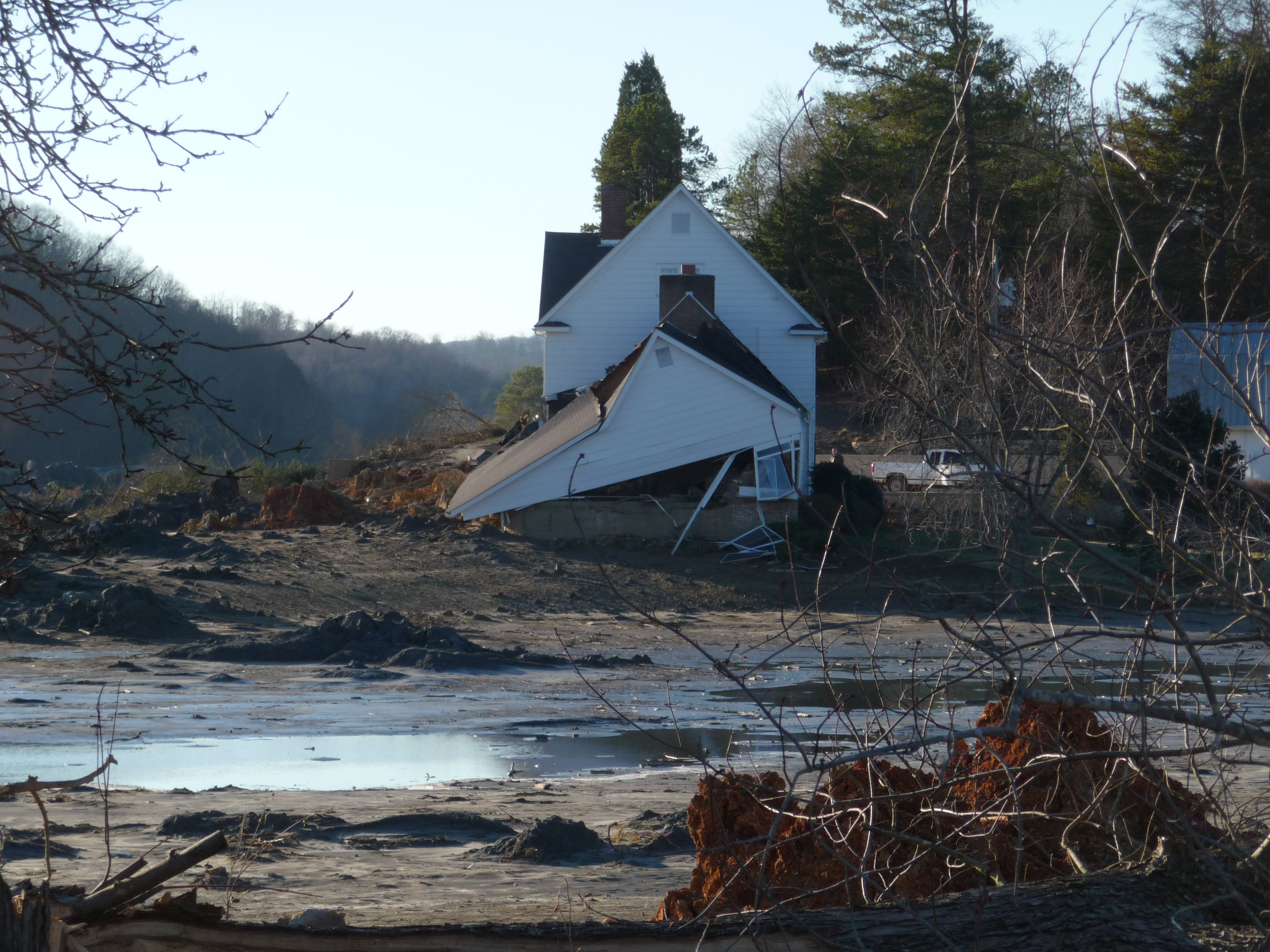
This coming Sunday, Dec. 22, marks five years since the Kingston Coal Plant’s ash dam in Tennessee ruptured, sending more than a billion gallons of toxic sludge into homes, onto farmland, and into the Emory and Clinch Rivers in Roane County – one of the biggest environmental disaster in U.S. history. Five years later, we’re still waiting – and pushing – for the Environmental Protection Agency to put in place long-overdue protections to prevent more coal ash disasters.
We saw the photos of huge “ash-bergs” in the rivers, of homes decked out with Christmas wreaths buried in toxic coal ash up to their eaves, and of trees and farmland covered in disgusting, dangerous sludge.
In the disaster, Americans saw first-hand the consequences of allowing state regulators that lack the will and ability to protect communities, to handle the complex issue of ensuring coal ash pollution is kept in check. We thought this tragedy would be the final straw and that national safeguards to protect Americans from this coal ash would surely follow.
Sadly, we were mistaken. The coal industry has done everything in its power to block long-overdue safeguards that could prevent another Kingston from happening somewhere else. Since the Kingston spill, the coal industry has lobbied hard to block the Environmental Protection Agency from establishing strong new protections. Because, for the polluters, all that matters is keeping operating costs as low as possible.
Now, EPA has two important pending actions to finalize that would give our communities the much needed and long overdue protections from coal ash pollution that they need and deserve. Under the Clean Water Act, the EPA can stop coal plant pollution, like coal ash, from being mixed with water. This mixture, or slurry, creates the dangerous coal ash ponds, like the one that failed at the Kingston Coal Plant, and allows lead, mercury and other toxic metals in the waste to move into our waterways much more easily.
EPA has repeatedly acknowledged that their existing guidelines have not kept pace with developments in the industry and have failed to address the worst pollutants in our waterways. Thankfully, they proposed new toxic water pollution standards for coal plants earlier this year. But the standards aren’t yet final, and industry is fighting them every step of the way, with political interference going all the way up to the White House, as we uncovered in a report we released earlier this year.
Just as importantly, under the federal Resource Conservation and Recovery Act (RCRA) EPA can ensure that the disposal of coal ash requires adequate monitoring and lining of these coal ash dumps while ensuring that massive earthen dams are maintained safely to prevent another disaster like the 2008 coal ash spill in Kingston. These separate, but equally important, protections are needed to fully protect communities living in the shadows of coal plants. EPA proposed these draft coal ash standards way back in 2010, but the safeguards have languished in red tape ever since and still haven’t been finalized.
Coal-fired power plants are the nation’s biggest water polluters, spewing millions of pounds of toxic metals and other pollutants like arsenic, boron, cadmium, chromium, lead, mercury, and selenium into surface waters each year. Need an example of how close to home this contamination can be? Duke Energy’s coal ash pollution is contaminating North Carolina’s Mountain Island Lake – a drinking water source for more than 750,000 people in the greater Charlotte area.
Just recently we saw how Duke Energy’s coal ash pollution from one coal plant in North Carolina kills 900,000 fish every year in Sutton Lake — and that’s just how it affects the fish!
Furthermore, dangerous byproducts from the burning of coal leech into groundwater and get blown around in the air we breathe. Many of these toxic pollutants pose serious health and environmental risks even in very low concentrations. For one example, just look at the ongoing battle between Louisville residents and the LG&E coal ash dump located right in one of the city’s neighborhoods. The pollution is blowing onto their homes and into their lungs.
In order to protect public health and the environment from water and waste pollution from coal-burning power plants, EPA must quickly finalize both the Power Plant Toxic Water Rule and the Coal Ash Rule. These standards are long overdue – the EPA must protect our air and water now. Americans have waited long enough for these basic protections.
TAKE ACTION: Tell the EPA to protect our water by enacting coal ash safeguards!



